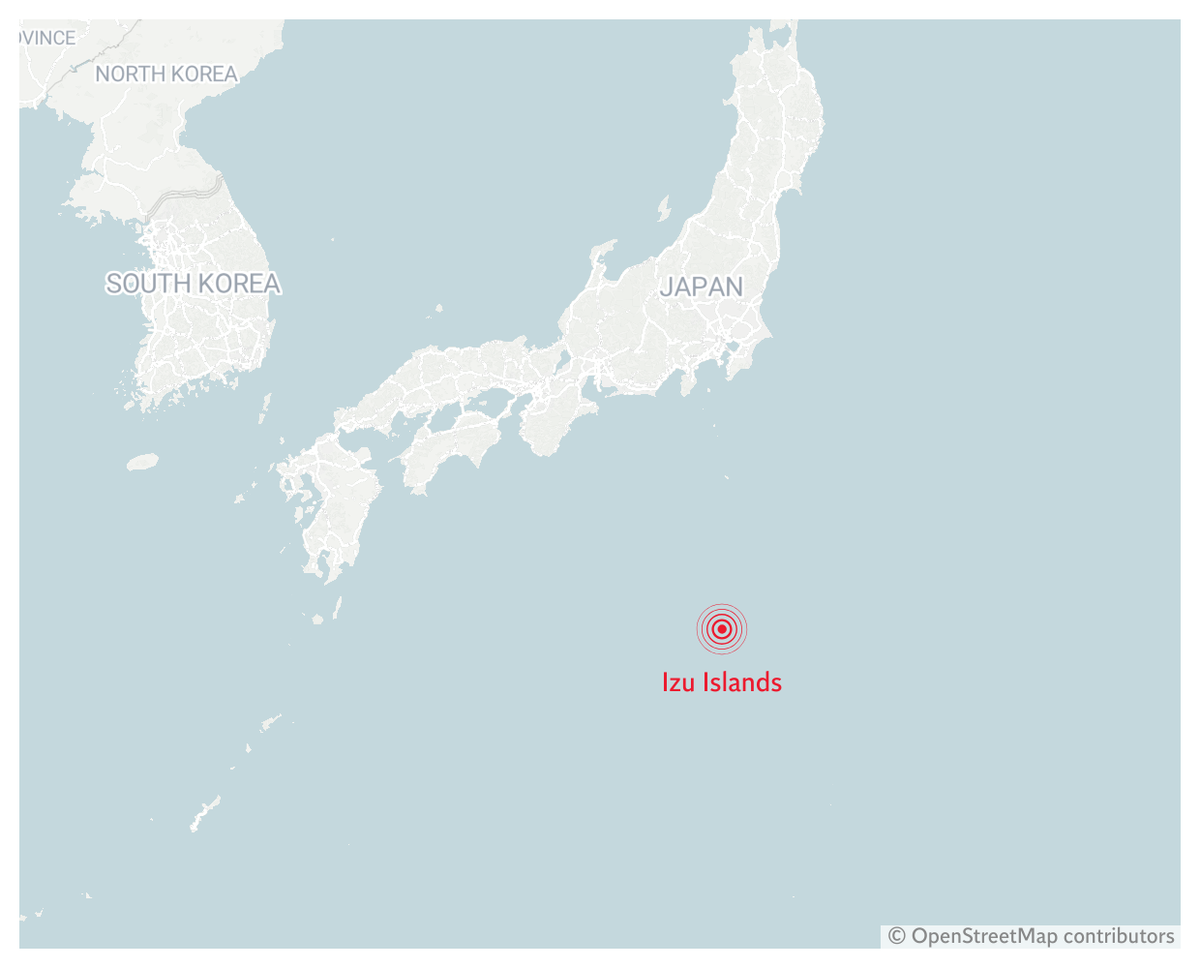On October 5, 2023, Japan encountered a huge seismic event when a 6.6 magnitude earthquake struck the Pacific ocean close to Torishima Island in the Izu chain. This cataclysmic event triggered a tsunami warning and prompted swift action from Japan’s meteorological agency.

Also Read: Sikkim Flash Floods: At Least 10 Dead and 23 Army Missing
The earthquake, with a magnitude of 6.6, happened at a depth of 10 kilometers (6.21 miles) at roughly 11:00 a.m. local time on October 5, 2023. Torishima Island, a uninhabited island situated around 600 kilometers (373 miles) south of Tokyo, was near the epicenter.
The seismic activity was centered in the Pacific Ocean, making it a potentially significant event due to its proximity to Japan’s coastline.
Following the earthquake, Japan’s meteorological agency quickly gave a tsunami warning for the Izu Islands. This warning, the second-lowest on the agency’s four-stage warning system, was a precautionary measure to protect the safety of residents and visitors in the affected areas.
The warning encouraged individuals to avoid the beach and river mouths, as well as to be cautious of expected changes in tide levels along the Pacific coast of Japan’s main islands.
One of the most critical developments after the tsunami advisory was the observation of tsunami waves. Initial forecasts suggested waves of approximately one meter, heightening concerns about their impact on the remote chain of islands south of Tokyo.
However, when the waves reached the Izu Islands, they measured only up to 30 centimeters (approximately 1 foot) in height.
Also Read: New York Declares State of Emergency Amid Flash Flooding
While these waves could appear to be moderately small, it is fundamental to comprehend the potential danger they pose.
Even a 30-centimeter wave can be hazardous, capable of sweeping individuals off their feet and causing injury or worse.
As such, residents living in coastal areas and near river mouths were urged to retreat to higher ground as a safety precaution.
Japan’s meteorological agency additionally gave alerts about possible delayed repercussions directly following the initial earthquake.
They estimated a 10% to 20% chance of another earthquake of similar magnitude occurring in the near future, urging residents to remain vigilant for the following week. This continuous alarm underlines the unusualness of seismic events and the significance of readiness.
In the days leading up to this earthquake, the western Pacific Ocean had experienced a noticeable increase in seismic activity.
This serves as a reminder of Japan’s vulnerability to earthquakes, as the country is situated along the Pacific Ring of Fire, an area known for its tectonic activity and frequent seismic events.
Japan is well-known for its preparedness and swift response to earthquakes and tsunamis due to its history of dealing with such natural disasters.
Also Read: Villarrica Volcano: Chile Raises Alert Level as Activity Increases
The nation has invested heavily in advanced early warning systems, earthquake-resistant infrastructure, and public education campaigns to ensure that its citizens are prepared for such events.
The meteorological agency’s speedy issuance of a tsunami advisory exemplifies the effectiveness of Japan’s early warning systems.
The goal of these systems is to provide residents with crucial information and lead time to take protective measures, such as evacuating to higher ground or sturdy buildings.
Japan’s diligence in preparing for earthquakes and tsunamis is rooted in its tragic history. The massive earthquake and tsunami that struck in 2011, with a magnitude of 9.0, caused immense destruction and claimed nearly 20,000 lives.
This catastrophe also led to a nuclear meltdown at the Fukushima Daiichi nuclear plant, resulting in long-term environmental and health consequences.
In the aftermath of this devastating event, Japan redoubled its efforts to enhance its disaster preparedness and response capabilities.
The lessons learned from the 2011 disaster have shaped the nation’s approach to mitigating the impact of future seismic events.
Also Read: Storm Agnes Set to Bring 80mph Winds and Heavy Rain
Top Sources Related to Japan Issues Tsunami Warning After 6.6 Magnitude Earthquake (For R&D)
The Weather Channel:
Sources about Earthquakes in 2023 (For R&D)
- List of earthquakes in 2023
- Significant Earthquakes – 2023
- India hit by 10 earthquakes in first quarter of 2023
- Turkey Earthquake 2023
- LIST, MAPS AND STATISTICS OF THE 20 LARGEST EARTHQUAKES IN 2023
- 2023 Turkey–Syria earthquake
- Recent Earthquakes in the Worldwide Region
- 5.4 Magnitude Earthquake Hits Eastern China, 21 Injured
- Colombia: 6.3 Magnitude Earthquake, 1 Dead
- Morocco Earthquake: Death Count Raises to Nearly 3,000
- 4.2-Magnitude Earthquake Hits Italy’s Naples, Biggest Earthquake in 40 Years
- Nepal Hit by 2 Earthquakes, Strong Tremors Felt in North India






















